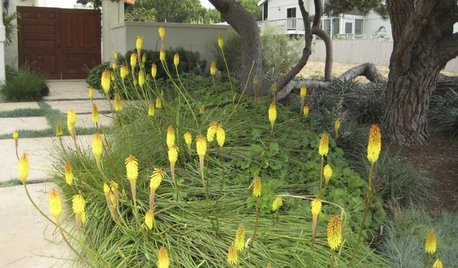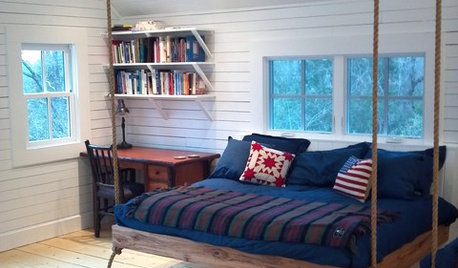Super High Density Apple Planting
curtis
10 years ago
Related Stories

GARDENING GUIDESGreat Design Plant: Sambucus Nigra
Common elderberry is a highly adaptable shrub from the eastern U.S., with berries galore for wildlife and humans alike
Full Story
PETSGarden Alert: 22 Plants to Keep Away From Pets
Avoid potential danger by keeping dogs and cats away from these landscaping and houseplant favorites
Full Story
GARDENING GUIDESGreat Design Plant: Red-Hot Poker
You'll carry a torch for these spiky plants once you discover how their fiery-hued flowers can light up a landscape
Full Story
GARDENING GUIDES7 New Plants to Grow for Beautiful Foliage
Add color, structure and interest to your garden with these recently introduced plants that sport exceptional foliage
Full Story
GARDENING GUIDESGarden-Friendly Native Alternatives to Overplanted Exotics
There are lots of gorgeous, wildlife-friendly native plants ready to make an appearance in your garden
Full Story
FRONT YARD IDEAS10 Ideas for a Front-Yard Edible Garden Your Neighbors Will Love
Choosing attractive, well-mannered plants and sharing the bounty will go a long way toward keeping the peace
Full Story
GARDENING GUIDES10 Easy Edibles for First-Time Gardeners
Focus on these beginner-friendly vegetables, herbs, beans and salad greens to start a home farm with little fuss
Full Story
LANDSCAPE DESIGNGet Along With Less Lawn — Ideas to Save Water and Effort
Ditch the mower and lower your water bill while creating a feast for the eyes with diverse plantings and gathering places
Full Story
GARDENING FOR BUTTERFLIESGarden for Wildlife to Reap Rich Rewards
When you plant with animals and insects in mind, you make gardening easier, the planet healthier and yourself more present
Full Story
DECORATING GUIDESHemp, Hemp, Hooray! This Superplant May Be Legal Again in the USA
Hemp products are durable, sustainable, antibacterial and much more. Will the plant finally get the status it’s due in the States?
Full StoryMore Discussions







MrClint
bob_z6
Related Professionals
Surprise Landscape Architects & Landscape Designers · Deer Park Landscape Architects & Landscape Designers · Glen Ellyn Landscape Architects & Landscape Designers · Kenmore Landscape Architects & Landscape Designers · Matthews Landscape Contractors · Waterbury Landscape Contractors · Bound Brook Landscape Contractors · Crystal Landscape Contractors · El Sobrante Landscape Contractors · Forest Hills Landscape Contractors · Lemont Landscape Contractors · Longview Landscape Contractors · Palos Verdes Estates Landscape Contractors · Shirley Landscape Contractors · Shenandoah Landscape Contractorscanadianplant
Suzi AKA DesertDance So CA Zone 9b
bob_z6
canadianplant
trianglejohn
canadianplant
OregonEd
Embothrium
canadianplant
bob_z6
canadianplant
johnthecook
bob_z6